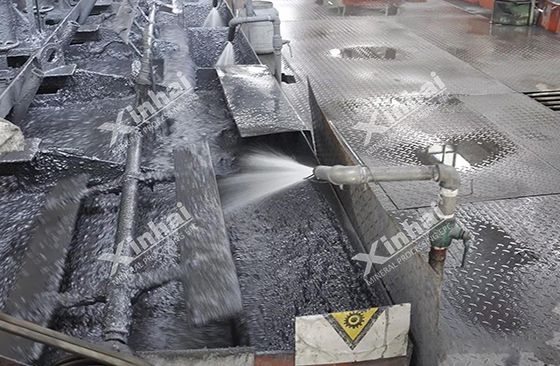

Warm Tip: If you want to know more details about equipment, solutions, etc, please click the button below for free consultation, or leave your requirements!
Flotation of non-sulfide minerals is more difficult than that of sulfide minerals. The main reason is that non-sulphide ores usually have high water solubility, and the useful minerals and gangue minerals are usually of similar types, with a small difference in surface properties. So, what problems should be paid attention to when flotation process of non-sulfide minerals?

Because the difference between the surface properties of useful minerals and gangue minerals is small, flotation process is difficult. So it is necessary to increase the difference between the surface properties of useful minerals and gangue minerals as much as possible. We can vary the surface properties of minerals in terms of pH value, agent action time, agitation intensity, water quality, and temperature at each stage.
In case of temperature, the buoyancy of useful minerals can be improved or the inhibitory capacity of gangue minerals can be increased by adjusting the temperature appropriately. For example, in the flotation of fluorite using fatty acid collector, the recovery rate of fluorite increases gradually and the growth rate of recovery decreases gradually when the pulp temperature is in the range of 5~35℃. During the flotation of scheelite, the high temperature can improve the inhibition of sodium silicate to calcite and fluorite. In addition, before flotation, non-sulfide minerals usually need a more complex pulp preparation process, which includes scrubbing, desliming, heating and mixing slurry, high concentration stirring, etc.
Among them, desliming is a common and critical operation. The fine mud produced in non-sulfurized minerals will not only consume flotation reagents, but also adhere to the surface of coarse particles, interfering with the separation process. Some of the fine mud may also contain a large amount of useful minerals, so sometimes the desilting material is divided into coarse and fine grain grades for separation.
When choosing flotation reagents for non-sulfide minerals, different regulators and collectors should be selected according to different minerals. For example, sodium silicate and ferrous sulfate are used to inhibit chlorite and carbonate, sodium silicate is used to inhibit calcite and mica, and sodium sulfide and sodium carbonate are combined to inhibit calcium and magnesium carbonate.
The collectors of non-sulfide minerals are divided into anionic collectors and cationic collectors. Anionic collectors include fatty acids, alkyl sulfonates, alkyl sulfates, etc., mainly used for flotation of tungsten, tin and other rare metals and non-metallic minerals; Cationic collectors include alkyl amines and quaternary amines of nitrogen, mainly used for flotation of iron ore, quartz, silicate and other minerals.
Among them, the commonly used collectors mainly include fatty acids, amines and petroleum sulfonates. Other types of collectors include alkyl fatty acid salts, sulfonated succinate, alkyl acid hydrochloric acid, phosphonic acid and amphoteric collectors.
Some problems needing attention in flotation of non-sulfide minerals are described above. There are many kinds of non-sulfide ores. And for different non-sulfide ores, there are their own problems to pay attention to. More detailed and targeted analysis is needed. It is recommended to entrust a qualified dressing laboratory or dressing equipment supplier to carry out the flotation test, and determine the technological conditions such as process flow and reagent system according to the ore properties, so as to avoid economic losses.


What Are the Differences Between CIP and CIL?
 11255
11255
 0
0